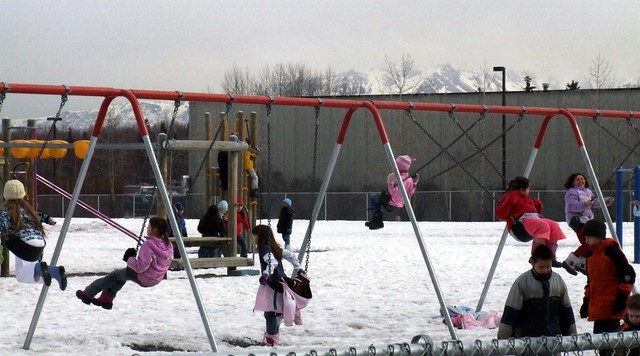Saturday, March 24, 2012
What is Nutrition in Education: Recess
What is Nutrition in Education: RecessIf you ask any child what their favorite part of the school day is, they will invariably say "Recess!". Recess is an important part of the day for a number of reasons - children need to be active, they need to be social and they need an opportunity to blow off steam. It is not, like so many schools have done, developmentally appropriate to remove recess time from a child's day. Few adults are able to attend their focus to monotonous tasks all day, and having this expectation for children is purely irrational. Recess is not only important from a Nutrition in Education point of view- but from all aspects of development.
 |
| by Travis S. |
Rae Pica, a children’s physical activity specialist provides 7 fantastic reasons why all children (and especially those with behavioral problems) need to have recess.
- Everyone benefits from a break.
- Recess increases on-task time.
- Children need outside light to regulate the biological clock, improve move, support the immune system and to synthesis Vitamin D.
- Unstructured physical play reduces stress.
- Children need to learn to be social creatures.
- Our children’s health is at risk when they do not have an opportunity to be physically active, regardless of weight status.
- Physical activity feeds the brain.
Unfortunately, there is a trend in the United States towards "no-recess" policies in elementary and middle schools. School districts in Atlanta, New Jersey, Chicago, New York and Connecticut are among those implementing such polices - some to the point that playgrounds are no longer being built on new school properties.Other districts, including those in Georgia, Pennsylvania, Illinois, Texas, New Jersey, California and Florida are implementing reduction or elimination plans.
Frequently, it is cited that children do no need recess because they have physical education classes. However, this is not true for a number of reasons. Numerous studies have shown that children are simply not as physically active during PE as they are at Recess - frequently because of the utilization of team sports, such as baseball, by PE teachers in which many children stand and watch while 5-6 children are physically active. One study showed that in 30 minutes of a physical education class, the average child is only vigorously active for about 2 minutes. Not to mention that PE is a class, which means it deprives children of the social aspects of recess that are so important for their development.
Structured recess has been shown to increase physical activity among children. Structured recess is a concept in which teachers initiate and supervise games which encourage children to be active during recess. Playworks, a company that helps teach students and teachers how to encourage active play in the playground, helps explain the impact of structured play in the video below.
Resources:
S. J. Silverman and C. Dennis (2003). Student Learning in Physical Education: Applying Research to Enhance Instruction
Bazaliaki, N., Cox, D., Long, T., Risteen, J., Sparks, K., Ward, K. J. (n.d.). No recess- no way: Take back your time. Retrieved from http://www.timeday.org/pdf/recess_ban_paper.pdf
Pica, R. (n.d.) 7 reasons why kids need recess. Retrieved from http://www.movingandlearning.com/Resources/Articles30.htm
Pemerton, T. (2011). Oklahoma City schools try structured recess. Retrieved from http://newsok.com/oklahoma-city-schools-try-structured-recess-program/article/3548973
Labels: What is Nutrition Education
0 Comments:
Post a Comment
<< Home